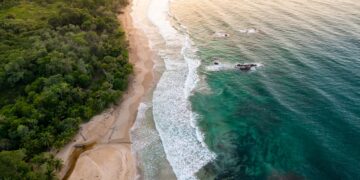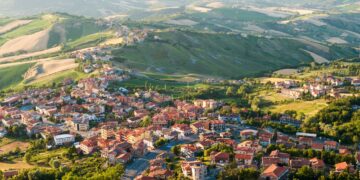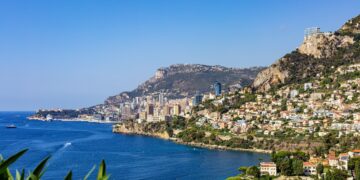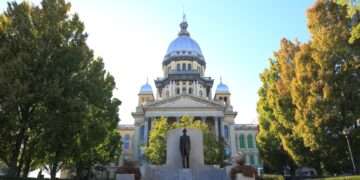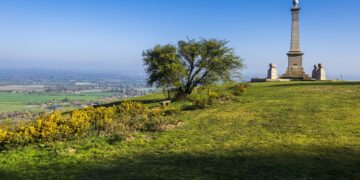Angola is a country rich in culture, history, and breathtaking landscapes. Over the years, it has also served as the backdrop for various films, TV shows, and books. This guide takes you through the world of literature and cinematography set in Angola, exploring the country’s hidden gems, culinary delights, and unique accommodations. Welcome to Angola, the land of stunning vistas and captivating stories.
10 Famous Films Shot in Angola
Angola’s diverse landscapes and vibrant culture have attracted filmmakers worldwide, transforming this African nation into a cinematic canvas. Here are 10 famous films, each reflecting a unique facet of the country:
- “Sambizanga” (1973) – This film explores the Angolan fight for independence through the story of a political activist arrested for his beliefs.
- “Nelisita” (1982) – A tale of courage and resilience, this film showcases Angola’s traditional folklore.
- “O Miradouro da Lua” (1992) – This drama captures the raw beauty of Angola’s landscapes and the struggles of a post-war society.
- “The Hero” (2004) – This film narrates the story of an Angolan war veteran adjusting to civilian life after losing a leg.
- “Hollow City” (2004) – Set during the Angolan civil war, this film follows the journey of a group of children trying to find safety.
- “I’ll Sing for You” (2001) – This documentary follows the life of Angolan musician Bonga Kuenda, providing a glimpse into Angola’s colonial past.
- “Luanda, A Fábrica da Míºsica” (2009) – This film explores Luanda’s vibrant music scene, highlighting the city’s resilience and creativity.
- “Death Metal Angola” (2012) – This documentary uncovers the thriving death metal scene in Angola, a testament to the country’s cultural diversity.
- “The Great Kilapy” (2012) – This historical drama set in the 1970s Angola offers a satirical take on colonialism and corruption.
- “Air Bridge” (2017) – A love story set against the backdrop of the Angolan civil war, highlighting the country’s turbulent history.
These films not only shine a spotlight on Angola’s cinematic potential but also provide a deeper understanding of the country’s history and culture.
5 TV Shows Set in Angola
The small screen, too, has found inspiration in Angola’s rich history and culture. Here are five TV shows set in Angola, each offering a unique perspective:
- “Sofia” (2018) – This crime drama set in Luanda follows the story of a dedicated police officer battling corruption.
- “Voo Directo” (2010) – This drama series explores the lives of airline staff and passengers, providing insights into modern Angolan society.
- “Jikulumessu” (2014) – A social drama that delves into the contrasts between Angola’s urban and rural life.
- “Windeck” (2012) – A telenovela that explores the ambitions and passions of people working in a fashion magazine in Luanda.
- “Na Corda Bamba” (2019) – This drama series follows a family’s journey to uncover their past in Angola.
These TV shows offer viewers an immersive experience, portraying the vibrant city life, traditional customs, and compelling narratives of Angolan society.
5 Animated Films Set in Angola
Animation has a unique way of capturing the imagination, and Angola has been the setting for several animated films. Here are five animated films that bring to life Angola’s rich culture and traditions:
- “The Legend of Ngonguenha” (2004) – This film brings an Angolan folk tale to life, introducing children to the country’s traditional stories.
- “Prince Muntu” (2018) – An adventure-filled animation that tells the story of a young prince on a quest to save his kingdom.
- “The Brats” (2007) – An animated series that follows the antics of a group of Angolan children, offering cultural insights in a fun way.
- “My Little Spongy Friends” (2012) – A film that uses animation to teach children about the importance of protecting the environment.
- “The Adventures of Ngunga” (1997) – This series takes viewers on a journey through traditional Angolan stories.
From traditional folklore to environmental awareness, these animations offer a unique and engaging way to explore Angola’s rich cultural heritage.
Famous Books Set in Angola: 3 Classic and 3 Contemporary
Angola’s complex history and rich culture have inspired numerous authors, resulting in fascinating narratives set in this African nation. Here are three classic and three contemporary books set in Angola that offer readers a glimpse into the country’s past and present:
Classic:
- “A Gloriosa Família” by Pepetela – This historical novel gives a vivid account of Angola in the 17th century under Dutch rule.
- “Mayombe” by Pepetela – Set during Angola’s struggle for independence, this book delves into the lives of guerilla fighters in the rainforests of Mayombe.
- “Soba” by Arnaldo Santos – This classic novel explores the traditional Angolan society through the life of a Soba, a tribal chief.
Contemporary:
- “The Book of Chameleons” by José Eduardo Agualusa – This book, set in contemporary Angola, offers a unique blend of African folklore and magical realism.
- “Good Morning Comrades” by Ondjaki – This novel provides a child’s perspective of living in Luanda during the civil war.
- “A General Theory of Oblivion” by José Eduardo Agualusa – This book tells the story of a woman who isolates herself from the world on the eve of Angola’s independence.
Each of these books offers a unique lens to view Angola, reflecting its rich history, diverse culture, and the resilience of its people.
Exploring Angola’s Filming Locations – Where to Go
Angola’s diverse landscapes have been captured in various films, TV shows, and books. Here’s a glimpse of some of the most iconic filming locations in Angola you should visit:
- Luanda – Angola’s capital city, Luanda, has been featured in numerous films and TV shows. From the bustling city life to the historic colonial buildings, Luanda is a must-visit.
- Kalandula Falls – Featured in various travel documentaries, the Kalandula Falls are one of the largest waterfalls in Africa and a sight to behold.
- Benguela – This coastal city has served as a backdrop for several films, boasting beautiful beaches, colonial architecture, and a vibrant culture.
- Lobito – Known for its scenic railway and harbor, Lobito offers a unique blend of natural beauty and industrial charm.
- Huambo – Once a colonial stronghold, Huambo is now a testament to Angola’s resilience, with its reconstructed buildings and bustling markets.
- Kissama National Park – Featured in numerous wildlife documentaries, this national park is home to a variety of African wildlife.
Whether you’re exploring the bustling streets of Luanda or marvelling at the Kalandula Falls, Angola offers a unique journey through its cinematic and literary landscapes.
Where to Sleep in Angola: 3 Cheap and 3 Luxury
Whether you’re traveling on a budget or looking for a luxury escape, Angola offers a range of accommodations. Here are three budget and three luxury options for your stay:
Budget:
- Albergaria Miramar – Located in Luanda, this hotel offers budget-friendly accommodations with comfortable rooms and a friendly staff.
- Hotel Praia Morena – Located in Benguela, this hotel offers affordable rooms and is within walking distance of the beach.
- Hotel Ritz Sumbe – Located in Sumbe, this hotel offers budget accommodations with basic amenities and a convenient location.
Luxury:
- Epic Sana Luanda Hotel – This luxury hotel in Luanda offers premium service, luxury suites, and a stunning view of the city.
- Talatona Convention Hotel – Located in Luanda, this luxury hotel offers top-of-the-line amenities, including a pool, a spa, and multiple dining options.
- Hotel Baía – This luxury hotel in Luanda offers ocean-view rooms, a rooftop pool, and gourmet dining.
Whether you’re sleeping in a budget-friendly room or a luxury suite, each accommodation offers a unique perspective of Angola, ensuring a memorable stay.
Where to Eat in Angola: From Flavorful Bargains to Opulent Tables
Angola’s culinary scene is a blend of traditional African dishes, Portuguese influence, and modern gastronomy. Here are three budget-friendly eateries and three luxury dining options in Angola:
Budget:
- Restaurante Cais de Quatro – Located in Luanda, this restaurant offers affordable traditional Angolan dishes.
- Chill Out – A popular restaurant in Luanda known for its budget-friendly local and international cuisine.
- Naquele Lugar – Located in Benguela, this restaurant is known for its affordable seafood dishes.
Luxury:
- Lookal Ocean Club – Located on the Ilha de Luanda, this upmarket restaurant offers gourmet seafood with a stunning ocean view.
- Espaí§o Luanda – This upscale restaurant in Luanda is known for its fusion cuisine, combining traditional Angolan flavors with international dishes.
- Vivenda Flor – Located in Talatona, this luxury restaurant offers a fine dining experience with a menu that changes daily, offering a variety of gourmet dishes.
Whether you’re enjoying a budget-friendly local dish or dining in a luxury restaurant, Angola’s culinary scene promises a gastronomic adventure that’s as diverse as the country itself.
Best Itinerary for Exploring Angola’s Filming Locations Day by Day
Angola is a country rich in history, culture, and stunning landscapes. If you’re planning to explore the country’s famous filming locations, here’s a detailed itinerary for you:
Day 1: Luanda
Start your journey in Luanda, exploring the city’s colonial architecture and bustling markets. Visit the Fortaleza de Sí£o Miguel, featured in several films, and the Mausoleum of Agostinho Neto, a distinctive landmark in many TV shows.
Day 2: Benguela
Travel to Benguela, where you can stroll along the Praia Morena, featured in various films and books. Visit the Benguela Railway Station, a historic site captured in several documentaries.
Day 3: Lobito
Head to Lobito, known for its scenic harbor and railways, both popular filming locations. Don’t miss the Restinga Peninsula, a beautiful spot featured in travel and wildlife documentaries.
Day 4: Huambo
Spend your day in Huambo, exploring the city’s colonial architecture and bustling markets, both featured in various films and TV shows.
Day 5: Kalandula and Dundo
Visit the Kalandula Falls and the nearby city of Dundo. The falls are one of the most popular filming locations, while Dundo is known for its rich history and culture.
Day 6: Kissama National Park
Spend your day exploring Kissama National Park, a popular location for wildlife documentaries. Enjoy a safari tour to spot various African wildlife in their natural habitat.
Day 7: Luanda
Return to Luanda and spend your last day shopping for souvenirs at the Mercado Central, a bustling market featured in several films. End your journey with a meal at one of the city’s restaurants, many of which have been featured in culinary shows.
This itinerary offers a balanced mix of city exploration and natural beauty, allowing you to experience the best of Angola’s famous filming locations.
Local Cryptid Legends and Curiosities About Angola’s Film Industry
Angola’s film industry is rich in history, with many local legends and stories adding a layer of intrigue to its cinematic landscape. Angola’s folklore is filled with tales of cryptids, supernatural creatures that have often found their way into movies and books.
One such legend is of the Kishi, a two-faced demon that’s said to lurk in Angola’s rural regions. This tale has been adapted into several films, adding a touch of local folklore to the plot.
In the realm of curiosities, one of the most interesting aspects of Angola’s film industry is its resilience. Despite a devastating civil war, the country’s filmmakers have worked hard to rebuild the industry, creating films that not only entertain but also tell important stories about Angola’s history and culture.
Hidden Gems in Angola
Beyond the famous landmarks and popular filming locations, Angola is home to several hidden gems. These lesser-known locations offer unique experiences and a glimpse into the country’s culture and history:
- Tundavala Gap – This stunning natural formation offers breathtaking views of the surrounding landscapes.
- Pedras Negras de Pungo Andongo – Also known as the “Black Stones,” these mysterious rock formations are steeped in local legends.
- Miradouro da Lua – Also known as “Moon Viewpoint,” this unique landscape looks like a slice of the moon on earth.
- Iona National Park – Lesser-known than Kissama, this national park is one of the oldest and largest in Angola, offering a unique safari experience.
- Bicauri National Park – This hidden gem is home to unique wildlife and offers a serene escape from city life.
Exploring these hidden gems offers an off-the-beaten-path experience, allowing you to discover a side of Angola that goes beyond the typical tourist trail.
What to Pack for a Trip to Angola
Traveling to Angola requires smart packing to accommodate the country’s tropical climate and diverse activities. Here are a few essentials:
- Clothing: Pack lightweight, breathable clothing for the day and warmer layers for cooler evenings. A rain jacket or umbrella is necessary during the rainy season.
- Footwear: Comfortable walking shoes are essential for city exploration, and hiking boots are recommended for trekking in parks and reserves.
- Accessories: Sunglasses, a hat, and sunscreen are a must to protect against the strong African sun. Don’t forget a good-quality insect repellent and necessary vaccinations for protection against mosquitoes.
- Gadgets: A camera to capture Angola’s stunning landscapes, a power adapter suitable for Angola, and a reliable flashlight for unexpected power outages.
- Medicine: Travel insurance that covers medical expenses is recommended. Also, pack a first-aid kit and any prescription medications you may need.
- Documents: Don’t forget your passport, visa, travel tickets, and any other necessary identification.
Packing smartly ensures a comfortable and hassle-free journey as you traverse through the various filming locations and hidden gems of Angola.
Transportation Tips for Getting Around Angola’s Filming Locations
Getting around Angola to explore its famous filming locations requires careful planning. Here are some transportation tips for a smooth journey:
- Air Travel: Domestic flights are the quickest way to travel between major cities like Luanda, Benguela, and Huambo.
- Public Transport: In cities, public buses and shared taxis are common, but they can be crowded and may not always follow a fixed schedule.
- Car Hire: Hiring a car with a driver is a good option if you’re comfortable with negotiating rates. However, be aware of Angola’s challenging driving conditions.
- Train Travel: Angola’s train network is being restored, with routes available from Luanda to Malanje and Benguela.
- Boat Travel: For some coastal destinations, boat travel can be an interesting option.
Remember, road conditions in Angola can be challenging, and it’s advisable to travel with someone familiar with the local conditions. Always keep a map handy and plan your routes in advance for a smooth and enjoyable journey.
Travel Documents Needed for Visiting Angola
When planning your trip to Angola, ensure you have the following documents:
- Passport: Your passport should be valid for at least six months beyond your planned departure date.
- Visa: Most travelers will need a visa to enter Angola. Be sure to apply well in advance of your trip.
- Proof of Vaccination: Proof of yellow fever vaccination is required to enter Angola. It’s also advisable to be up to date on routine vaccines.
- Travel Insurance: It’s recommended to have travel insurance that covers medical evacuation, as medical facilities in Angola may not be up to western standards.
- Proof of Accommodation and Funds: You may be asked for proof of accommodations and sufficient funds for your stay.
Having all your travel documents in order ensures a smooth entry and a trouble-free stay in Angola.
Conclusion: Your Ultimate Guide to Angola’s Cinematic Landscape
From famous films shot in its bustling cities and serene landscapes to the TV shows and books that capture its rich culture and history, Angola offers travelers a unique journey. This guide provides you with the information you need to explore Angola like never before. Whether you’re a film enthusiast, a bookworm, or a seasoned traveler, pack your bags and embark on a memorable journey through Angola’s cinematic landscape. You’re sure to return with a deeper appreciation for this beautiful African nation and the stories it has to tell.



